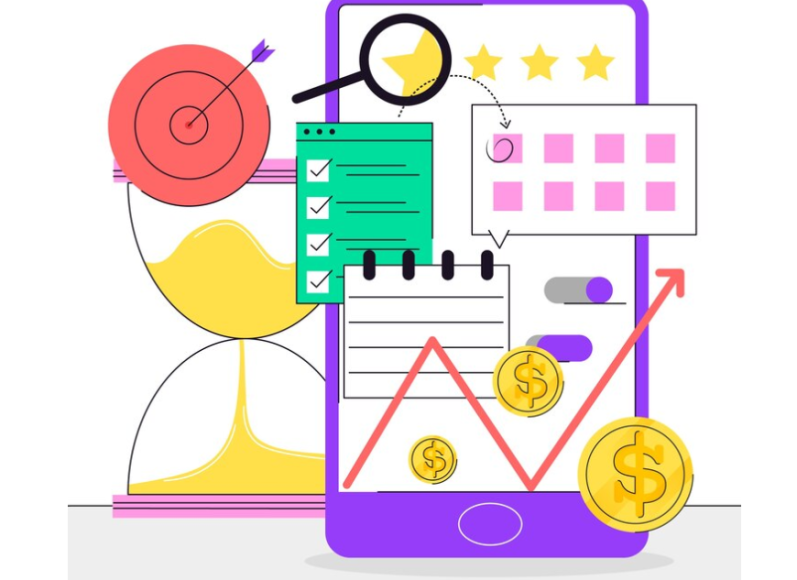Understanding the Needs of Niche Markets
Identifying Unique Requirements
To effectively personalize invoicing strategies, it’s essential to identify the unique requirements of each niche market. This can be achieved through a detailed analysis of the needs and expectations of clients within these markets, considering their business models, transaction volumes, payment preferences, and any industry-specific regulations. Direct engagement with clients via surveys and feedback forms is crucial to gather insights and refine invoicing strategies accordingly.
Tailoring Communication
Personalizing invoicing also involves crafting communications that resonate with niche audiences. This includes using personalized elements, appropriate language, and tone for different markets. Adjusting these aspects ensures the client feels understood and valued, thereby enhancing the overall client experience.
Custom Invoicing for Creative Freelancers
Flexible Payment Options
Offering Installment Plans and Milestone-Based Payments
For creative freelancers, flexible payment options enhance client satisfaction and cash flow management. Installment plans allow clients to spread costs over multiple payments, making budgeting easier. Milestone-based payments ensure regular cash flow and confirm project progress by linking payments to specific project stages. This reduces financial risk and maintains steady project advancement.
Accepting Various Forms of Payment
In the digital economy, accommodating diverse payment methods is essential. Freelancers should accept payments via digital wallets like PayPal or Apple Pay, as well as traditional credit and debit cards. Multiple payment options provide a convenient transaction experience, encouraging prompt invoice settlement. This flexibility improves client satisfaction and increases the likelihood of timely payments.
Detailed Breakdown of Services
Itemizing Creative Services to Provide Transparency
Transparency is key to building trust and ensuring clarity in invoicing. Freelancers should itemize their services, detailing each task or deliverable separately. This helps clients understand what they are paying for, reducing disputes and misunderstandings.
Including Descriptions, Hours Worked, and Rate Per Service Rendered
Invoices should include detailed descriptions of services rendered, hours worked on each task, and the rate charged. This provides clients with a clear view of completed work and justifies the total amount billed. Such transparency fosters trust demonstrates professionalism, and enhances client satisfaction, encouraging repeat business.
Tailored Invoices for Tech Startups
Implementing Recurring Billing for SaaS Offerings
Tech startups offering Software as a Service (SaaS) products benefit greatly from recurring billing systems. Automatic billing cycles ensure consistent revenue flow and ease for clients, reducing the administrative burden of manual invoicing.
Providing Clear Terms for Subscription Plans and Renewals
Clarity in subscription-based invoicing is crucial. Startups must outline transparent terms for subscription plans, billing frequencies, and renewal processes. Clearly specified pricing, payment schedules, and cancellation policies help clients make informed decisions, minimizing disputes.
Integrating with Project Management Tools
Syncing Invoices with Platforms like Asana, Trello, or JIRA
Integrating invoicing systems with project management tools like Asana, Trello, or JIRA streamlines the process for tech startups. This synchronization links project milestones to invoice generation, ensuring seamless, accurate billing that reflects project progress.
Automating Invoice Generation Based on Project Milestones
Automating invoice generation tied to project milestones enhances efficiency and accuracy. Payments correspond to specific stages of project completion, reducing manual effort and errors. This automation ensures timely and precise billing that is aligned with project deliverables.
Leveraging Technology for Custom Invoicing
Automated Invoicing Software
Utilizing Tools like QuickBooks, FreshBooks, or Xero for Tailored Invoicing
Automated invoicing software solutions such as QuickBooks, FreshBooks, and Xero provide extensive capabilities for creating tailored invoices. These tools enable businesses to automate their billing processes, reducing manual intervention and the risk of errors. With features that allow for customization, these software solutions can be adjusted to meet the specific needs of various niche markets, enhancing efficiency and client satisfaction.
Setting Up Templates and Recurring Payments within the Software
One of the key advantages of using automated invoicing software is the ability to set up templates and manage recurring payments. By creating customizable templates, businesses can ensure consistency and professionalism in their invoicing. Recurring payment options streamline the process for clients who require periodic billing, thus facilitating seamless and timely transactions that improve cash flow and client relationships.
Personalized Invoice Templates
Designing Invoices that Reflect the Brand Identity of the Business
A well-designed invoice can do more than just request payment; it can also reinforce the brand identity of the business. Personalized invoice templates that incorporate brand elements such as logos, specific colors, and unique design features help convey the essence of the business. This not only enhances the aesthetic appeal but also strengthens brand recognition and leaves a lasting impression on clients.
Incorporating Logos, Colors, and Unique Design Elements Specific to the Niche
Tailoring invoices to reflect the specific niche market involves incorporating logos, colors, and other design elements that resonate with the target audience. These personalized touches convey attention to detail and professionalism, making the invoicing process more engaging for clients. When clients receive invoices that are visually aligned with their expectations and the nature of the business, it adds a layer of trust and appreciation.
Enhancing Client Experience Through Feedback
Integrating Feedback Mechanisms within Invoicing
Incorporating feedback mechanisms into the invoicing process is vital for continuous improvement. Feedback forms or links on invoices allow clients to share insights about their invoicing experiences. This feedback can highlight areas for enhancement and specific client needs, enabling businesses to refine their invoicing practices over time.
Analyzing Feedback to Optimize Invoicing Practices
Regularly gathering and analyzing client feedback is crucial for optimizing invoicing strategies. By reviewing feedback, businesses can identify recurring issues or preferences and make necessary adjustments, ensuring that invoicing practices remain client-focused and up-to-date.
Periodic Reviews and Updates of Invoicing Methods
Staying competitive requires businesses to keep abreast of industry trends and best practices in invoicing. Regular reviews and updates to invoicing methods ensure that processes are efficient and aligned with current standards. This proactive approach fosters better client relationships and improves overall satisfaction.



